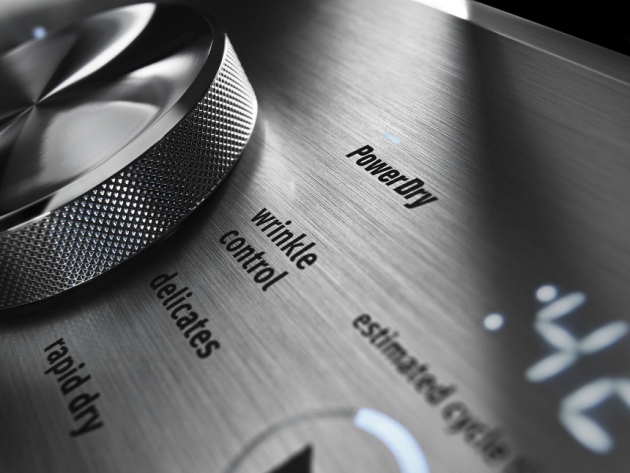Let’s face it, laundry day is not the favorite time of the week for most people. This can be compounded when you’re faced with a host of confusing dryer cycle titles that don’t seem relevant to your needs. Using the correct dryer cycle can have a huge impact on the quality of drying for your fabrics and understanding them makes the selection easier. In this article, we will take a closer look at six common dryer cycles to help you make an informed decision.
1. A Regular or Timed Cycle
For many people, this will be the default dryer cycle because the name suggests it’s the regular way to use the dryer. But, using the regular cycle in this way can be very damaging for lighter and less durable fabrics. In fact, this setting should be reserved for tougher fabrics and garments, including jeans, sweatpants, towels, sheets, and bedding. This cycle is usually the hottest setting and you can choose the drying time length with the timer. Be aware that higher heat settings can fade colored fabrics, but it’s very effective if you want very clean whites.
2. The Automatic Cycle
Modern dryers often have a built-in moisture sensor that monitors the dryness of your fabrics throughout the cycle. Once the sensor has detected that your clothes are dry it will stop the cycle or air dry the contents of the dryer for a short period. This prevents the formation of wrinkles because the clothes don’t get too hot. Again, this is a hot setting and it’s not well suited to delicate or colored fabrics.
3. The Delicate or Gentle Cycle
The name of this cycle seems to suggest that it’s the ideal fit for fabrics that need special washing and drying instructions. But, it’s important to understand that some delicate clothing items, such as women’s underwear should not be dried in your dryer at all. Where this dryer cycle excels is in the drying of other special fabrics, including silk and rayon. This cycle is also a great option when you want to dry sportswear and upholstery fabrics that can be damaged with higher heat settings. If you have clothes with delicate details such as embroidery, beads, and sequins this is also a good dryer cycle option.
4. The Permanent Press Cycle
This cycle goes back to the 1950s when it was used as a way to treat wrinkling issues. Today this is a great option when you want to dry synthetic fabrics, including rayon, nylon, spandex, and polyester. Clothes dried with this cycle will be treated to a gentler tub rotation and low to medium heat which will avoid the setting of wrinkles.
5. The Steam Cycle
This is a dryer cycle that you will only find on modern dryers. This cycle generates steam rapidly to freshen up fabrics in a similar way to the dry cleaning process. After this cycle is completed, you will notice that the clothes may not feel as dry as the other common dryer cycles. But, any stubborn odors will be removed and if you have stubborn wrinkles they will disappear. Some people think that a steam cycle can shrink clothes but this is not true. If shrinkage does occur it usually takes place in a washer when very hot water is used.
6. The Air Fluff Cycle
This cycle draws air into the dryer from the surrounding area to freshen up items. This cycle is unique because no heat is used and fabrics that are placed in wet will not dry. The purpose of the air fluff cycle is to touch-up items, such as “puffer” coats, comforters, and down-filled pillows.
Using an outdated dryer can damage your clothes and fabrics which will cost you more money in the medium to long term. We have a wide selection of new dryers to make your next laundry day easier and more energy efficient.
If you’re interested in a new dryer, take a look at our extensive range of models.

